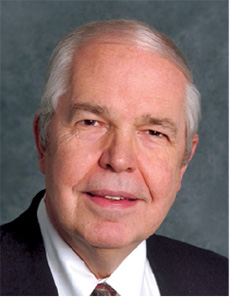
By Q. David Bowers

numismatist of our time, is a prolific
researcher and writer. His lifelong
experience with rare coins and pursuit
of scholarly knowledge earned him
Numismatist of the Century honors from COINage, among countless other honors.
In 2018, all of us, at least most of us, use a computer and rely on the internet as a source for information. As the author of quite a few books involving years of research, I recall as early as the 1950s going to the Library of Congress, the New York Public Library, the American Numismatic Society, and other places and filling out call slips to borrow reference books for study. An acquaintance was a salesman for the Encyclopedia Britannica, and my deluxe bound set, purchased at a deep discount from him, was used constantly, as was the multi-volume set of Dictionary of American Biography. Seeking information on the California Gold Rush, the minting of coins at various cities, the distribution of obsolete paper money, and Americana in general, I looked through countless newspapers.
I remember in one instance many years ago, I sought information on Civil War token issuers in the city of Cincinnati. I was very fortunate to obtain a complete file of the Cincinnati Inquirer for the year 1863. I spent several days going through it page by page looking for information about token issuers. Then, feeling I might have missed something, I sent the file off to Steve Tanenbaum in New York City. We didn’t find much.
Today, I can touch a button on my computer, put in certain search words, and check that file or any others in a matter of minutes! Similarly, some years ago when the New York Herald Tribune closed down, I acquired in large bound folders a complete run of its issues of 1861 to 1865, encompassing the Civil War years. My intention was to use them someday in research. No need to do that now, as, again, on the internet I can just press a few buttons.
Beyond that, the internet is excellent for current information–sometimes too much of it–facts and figures, photographs, and more.

As the Numismatic Director of Whitman Publishing, I am happy to report that the year 2017 registered a nice uptick in sales of printed books. So far into 2018, this has repeated itself. How marvelous it was a few years ago when Whitman issued the first edition of the Deluxe Guide Book of United States Coins (nicknamed MEGA RED), which was priced at $49.95 and sold out the print run of 12,000 copies. We were not expecting that to happen.
Recently MEGA RED 4 went to the printer and by the time this issue of COINage is published, it should be available from Whitman, book stores, or on Amazon. The print run keeps increasing.
In the meantime, A Guide Book of United States Coins, of which I have been research editor for quite a few years, has not been replaced by the internet or anything else. My familiar Red Book is always within arm’s reach when I write anything about coins and has quite a few features that make it easier to use than the internet.
If I want to find the mintage of an 1883-CC Morgan silver dollar or the market price of a 1785 Vermont “IMMUNE COLUMBIA” copper or the mintage of a 1908-S double eagle, I don’t have to tap any keys and wait for information to pop up, probably surrounded with a bunch of advertisements for things I don’t want to buy, and news I have already read too much about. Instead, it takes but a few seconds to find this and any other information in the Guide Book.

Second, the Guide Book is comprehensive. Between two covers there are thousands of prices, much narrative, and a lot of other things. To find all of this on the internet would require a day of searching, and you would already need to know what you are looking for. In the meantime, for every fact that comes on your screen, you will likely receive a bunch of pop-up ads, website suggestions, and other spam you don’t want and may not easily rid yourself of.
Third, the Guide Book requires no batteries or other power source. I can use it for a year at a time, no need to recharge it! Moreover, if I happen to go to the Galapagos Islands, not planned, I can take a copy with me even if there is no internet service or Wi-Fi.
Next, and a bit more personal, as I look through the list of contributors in the Guide Book, the names of coin organizations, and other information, a lot of nice experiences come to mind. It reminds me of the good people who are involved and have been for many years.
What I say about the Guide Book I can say about many other things. I subscribe to USA Today and at the post office pick up issues daily except for Saturday and Sunday when it isn’t published. In the evening I sit down with a beverage in one hand and a copy in the other hand, and read through it, including the latest news, politics, opinions, and a page with tidbits of information from every state.
At the same time, as a subscriber, I have a free copy of the USA Today on the internet, but to access it involves opening it up on the screen (in my case a computer screen as it is not really possible to enjoy on my iPhone), then scrolling down and moving around. The paper edition is much more convenient, so much so that after trying the electronic issue once I have never gone back to it on a daily basis.
However, the ever-innovative publishers of the newspaper put out electronic issues on Saturday and Sunday, and I have no choice but to go to a computer and see what is going on. This experience reminds me that it is not particularly comfortable to do so.
Similarly, my favorite magazine, The Economist, usually arrives Monday of each week. Published in England, but with offices around the world, including in New York, it gives probably the most unbiased views of what is going on that can be found in any magazine of general circulation. I usually spend at least an hour on it, sometimes two hours.
Often, I will read it for a half-hour, put it down, do something else, and pick it up again. The Economist also has an electronic edition that I could access for free, but I have never used it.
Returning to numismatics, there is something nice about reference books in print. Recently I have been doing extensive research on Civil War tokens, with U.S. Civil War Store Cards, edited by John Ostendorf, on the table next to where I sit, joined by a copy of the just-published Patriotic Civil War Tokens 1861-1865, edited by Susan Trask. Both are published by the Civil War Token Society and available for purchase on the internet. Each has countless illustrations, information about rarity, and more. They can’t be accessed for reading on the internet, but if they were I wouldn’t go there.

Again, they are portable, random access, and offer instant retrieval of what I want. Stack’s Bowers Galleries will soon publish The Copper Coins of Vermont and Interrelated Issues–1783-1788, a book that has involved years of research. Stack’s Bowers has a nice selection of other books we’ve issued over the years–each one offering interesting information just a moment away.
A somewhat different view can be taken concerning back issues of numismatic periodicals. Apropos of this, I have a complete run of The Numismatist from 1888 to date, the issues from 1888 to 1893 in reprint form, and the others are originals. The company library has a complete set of the American Journal of Numismatics from 1866 onward, and The Numismatic Scrapbook Magazine from 1935 onward. I have spent countless hours looking through these, skimming each page, and stopping to read many things in detail.
Along the way I have found many unexpected delights. Today in 2018, the American Journal of Numismatics and The Numismatist are available on the internet, and it makes common sense for anyone who is involved in research to use those. They are instantly searchable. If I want to find out what B. Max Mehl did or advertised in 1922, The Numismatist will tell me at the touch of a button. Of course the same thing could be found in the printed pages. One big difference is cost–a complete run of both magazines would probably run into the thousands of dollars. The internet is free.
I have been a part of Coin World ever since it began publication in 1960 and have been a columnist since 1961. I do not have a complete file of back copies due to the logistics of storage. How nice it could be if these were digitized and I could search through my back columns, or, beyond that, look up information about new issues, engravers, important auction sales, and the like. Perhaps that will happen in the future.
Also, I would want to see if I could find something that Rob Bashlow told me years ago. As a prank he sent to me a Coin World article about some obscure dealer in Russia, if I remember correctly, passing away and stating that at one time he was the main secret supplier of coins from Europe to the Chapman brothers in Philadelphia. The whole story was fiction.
As I see it, printed material is still dynamic and takes the lead in many ways. In fact, as I write these words, certain parts of the internet become clumsier than ever before–with huge amounts of unwanted advertisements and other notices appearing when I want to check on news. How annoying. A book waiting to be opened and read is not annoying.
Here’s a toast to enjoying both types of media, now and in years to come!
Want to receive COINage magazine in your mailbox or inbox? Subscribe today!













